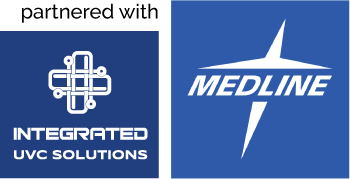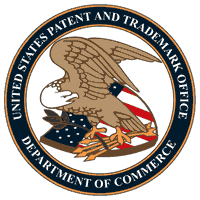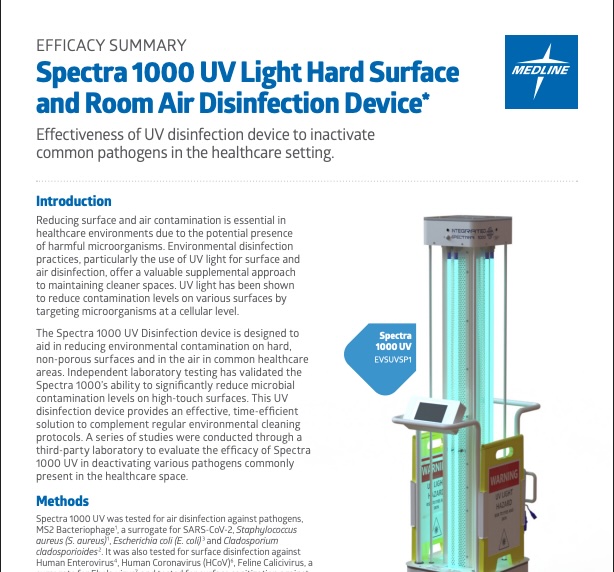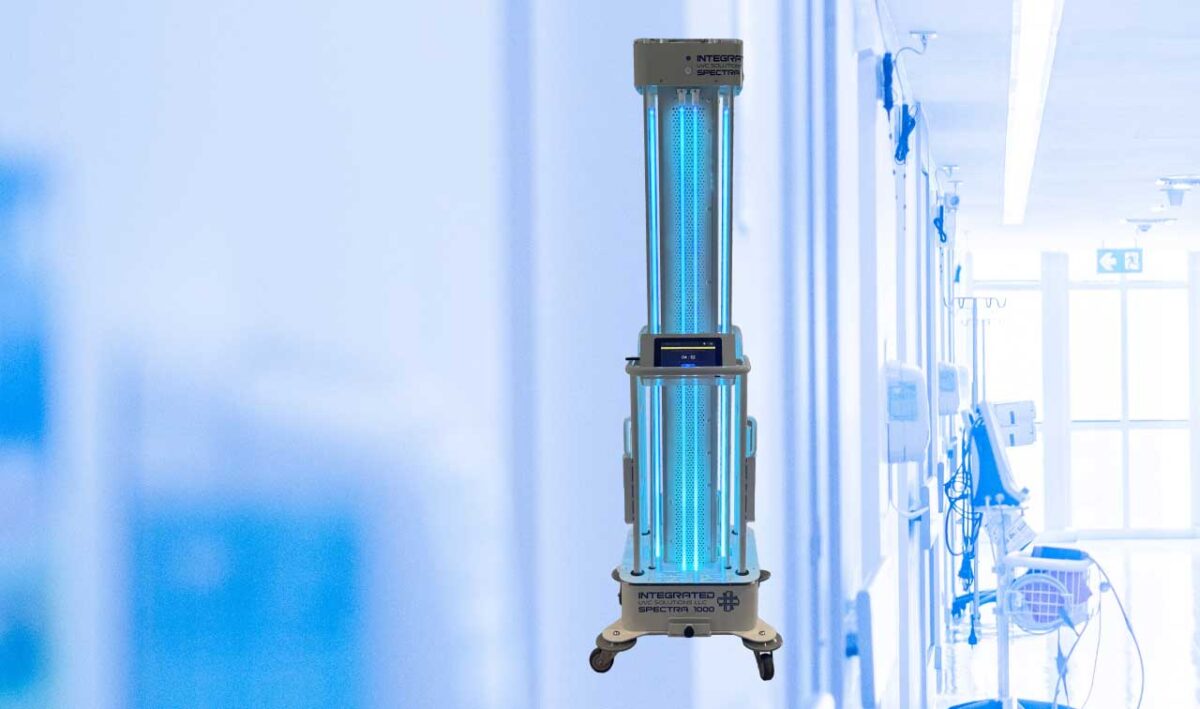Conventional supplemental UV-C cleaning devices often demand six-figure purchase orders plus recurring service contracts—an expense profile that can bottleneck adoption and leave only a handful of devices for an entire campus.


Conventional supplemental UV-C cleaning devices often demand six-figure purchase orders plus recurring service contracts—an expense profile that can bottleneck adoption and leave only a handful of devices for an entire campus.

Environmental Services (EVS) departments juggle escalating pathogen challenges, tighter room-turn schedules, and staffing constraints that seldom ease.

Independent laboratory testing has validated the Spectra 1000’s ability to significantly reduce microbial contamination levels on high-touch surfaces. This UV disinfection device provides an effective, time-efficient solution to complement regular environmental cleaning protocols. A series of studies were conducted through a third-party laboratory to evaluate the efficacy of Spectra 1000 UV in deactivating various pathogens commonly present in the healthcare space.

Procurement teams face the challenge of balancing performance with operational efficiency and cost. The Spectra 1000 from Integrated UVC Solutions was designed to meet that challenge head-on—with patented dual action capabilities, simplified engineering, and a price point that enables full-facility deployment.

DOWNLOAD THE STUDY CONTACT US Performance of the Spectra 1000 supplemental UV-C disinfection device in a full C. difficile and MRSA study. Clostridium difficile 43598 (Endospores) This bacteria is a Gram-positive, rod shaped, endospore generating obligate anaerobe. Clostridium species are part of the normal human gut flora that produce spores which are highly resistant to […]

DOWNLOAD THE STUDY CONTACT US Performance of the Spectra 1000 supplemental UV-C disinfection device in an aerosol staphyloccus aureus 6538 study. This bacterium is a Gram-positive, spherical-shaped, facultative anaerobe. Staphylococcus species are known to demonstrate resistance to antibiotics such as methicillin. S. aureus pathogenicity can range from commensal skin colonization to more severe diseases such […]

DOWNLOAD THE STUDY CONTACT US Performance of the Spectra 1000 supplemental UV-C disinfection device in an aerosol MS2 Bacteriophage study. MS2 Bacteriophage (MS2), ATCC 15597-B1 This virus is a non-enveloped positive-stranded RNA virus of the bacteriophage family Leviviridae. Bacterial cells are the hosts for bacteriophages, and E. coli 15597 serves this purpose for MS2 bacteriophage. […]

DOWNLOAD THE STUDY CONTACT US Performance of the Spectra 1000 supplemental UV-C disinfection device in an aerosol E. coli study. Escherichia coli – this bacteria is a Gram-negative, rod shaped, facultative anaerobe commonly found in the gastrointestinal tract of mammals. Although most serotypes of this microorganism are harmless there are pathogenic groups of E. coli […]

DOWNLOAD THE STUDY CONTACT US Performance of the Spectra 1000 supplemental UV-C disinfection device in an Aerosol Cladosporium Cladosporioides Study. This heavily sporulating fungi is a dematiaceous mold, meaning that it is characterized by the olive-to-black pigmentation of its conidia and hyphae. It is prevalent in indoor and outdoor environments, and is a plant pathogen […]

DOWNLOAD THE STUDY CONTACT US Performance of the Spectra 1000 supplemental UV-C disinfection device in a full Ebola Surrogate study. Feline calicivirus (FCV), ATCC VR-782 This virus is a non-enveloped, positive-stranded RNA member of the genus Vesivirus, and a common cause of respiratory infections in cats. Symptoms of infection in felines include nasal discharge and […]